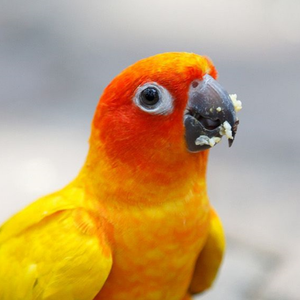15766355
Science 8: Unit 5 - Fresh and Saltwater Systems Vocab Flashcards
Beschreibung
Karteikarten von Riley Babuik, aktualisiert more than 1 year ago
Mehr
Weniger

|
Erstellt von Riley Babuik
vor etwa 6 Jahre
|
|
Zusammenfassung der Ressource
| Frage | Antworten |
| large, fast-flowing water | river |
| small, fast-flowing water | stream |
| a smaller body of water, surrounded by land | pond |
| a larger body of water, surrounded by land | lake |
| low lying areas of land, that act as a sponge for water | wetlands |
| water systems that exist above ground | surface water |
| water systems that exist below ground | ground water |
| the area around a river that would become covered if it were to flood | floodplain |
| the addition of unwanted substances into groudwater | contamination |
| the amount of matter suspended in water determines this | clarity |
| rock and soil that have pore spaces that are connected | permeable |
| soil or rock that has small to none pore spaces, that water cannot penetrate | impermeable |
| water that doesn't soak into the ground | run-off |
| marks left by rock trapped in a retreating glacier | straitions |
| the layer of porous rock that is saturated with water | water table |
| an underground source of water, resulting when pore spaces are filled above an impermeable underground layer | aquifer |
| a drainage basin, where all water in that area drains into one body of water | watershed |
| the amount of water discharged by a watershed | streamflow |
| the movement of sediments from one area to another | erosion |
| eroded sediments settling out of the water when it slows down | deposition |
| upstream areas of a watershed, where the water originates | headwaters |
| the endpoint of water flowing through a watershed | outwash |
| water east of this flows to the Hudson Bay, and goes west to the Pacific Ocean | continental divide |
| a pollutant in which water originates from a widespread area | non-point source contamination |
| the source of a pollutant that contaminates from a small, defined area | point source contamination |
| huge mass of ice and snow, creating a continent-sized glacier | continental glacier |
| a glacier that forms in a mountain range | valley glacier |
| more flexible closer to its melting point | malleable |
| ice that is rarely over 5 meters thick and breaks easily | pack ice |
| large chunks of ice calving off a continental glacier | iceberg |
| eroded material that piles up on the sides of a retreating glacier | moraine |
| glaciers drop sediment as it melts - this is a mix of rocks, clay and sand | glacial till |
| winding ridge formed by flowing water | esker |
| diseases or a virus that get into water | water pathogens |
| decaying bodies of plants or animals that spread nutrients into the water | detritus |
| amount of salt dissolved into the water | salinity |
| highest point in a wave | crest |
| lowest point in a wave | trough |
| a current or wave that carries and erodes tons of sediment | longshore current |
| have no flowers, roots or leaves, do photosynthesis, and get nutrients from the water they live in | seaweed |
| rooted to the bottom of lake/ocean floor, have stomata on top of leaves, and flexible | attached aquatic plants such as duckweed and water lilies |
| extremely small, require light to photosynthesis, are made of silica, weird shape with long spikes, have adaptations to stop sinking | phytoplankton |
| diseases and contaminates that get into water | pathognes |
| the minerals and dissolved solids that get into water | sodium, iron bacteria, calcium |
| when harmful chemicals get into the atmosphere and mix with water vapor | acid precipitation |
| water at _ temperature at its most dense | 4 degrees celcius |
| when a pollutant spreads from an aquatic plant and into the food chain, making it widespread | biomagnification |
| small cracks in the ocean ridge spread gases such as sulfur into the ocean | sea-floor vents |
| bacteria that goes through a process to consume the sulfur coming from sea-floor vents | chemosynthesis |
| 5 main water quality standards of the Alberta government | - drinking water for people - protection of organisms that live in or near water - drinking water for livestock - irrigation for crops -recreation, like swimming |
| water that is drained from homes, industries and business | sewage |
| a large underground storage tank for drained water used most commonly in rural areas | septic tank |
| sewage that has been treated | effluent |
| water that is safe to drink | potable |
| name the seven stages of water treatment | 1. Water from a river or lake it filtered 2. Pumps move water to treatment plant 3. Chemicals such as lime, alum, charcoal are added to stick to minerals and bacteria 4. The suspended solids settle to the bottom of another tank 5. Water is pumped through beds of sand and gravel to take out rest of suspended material, leaving potable water 6. Ozone or chlorine may be added to provide addition cleansing 7. The safe, potable water is transported to homes through underground pipes |
| to purify water by turning it into water vapour, condense it, and take the resulting liquid | distill |
Möchten Sie mit GoConqr kostenlos Ihre eigenen Karteikarten erstellen? Mehr erfahren.
